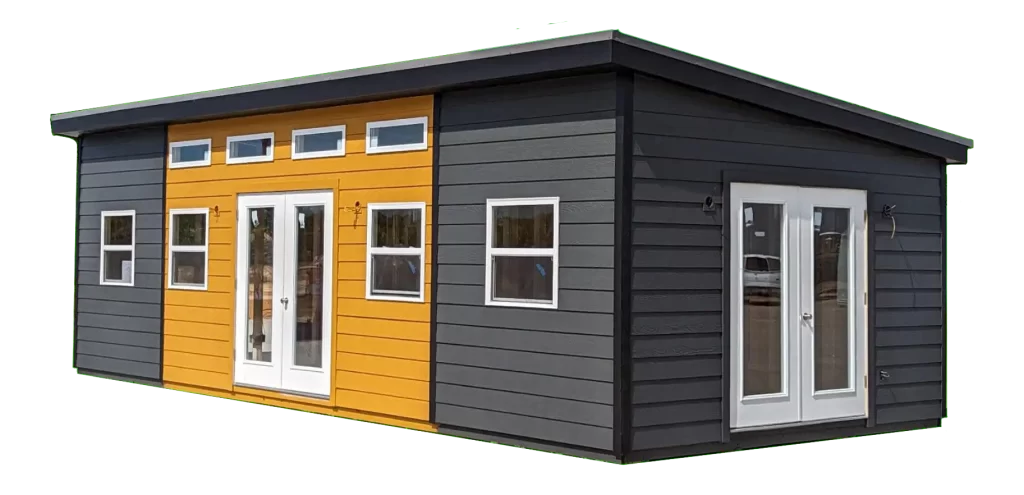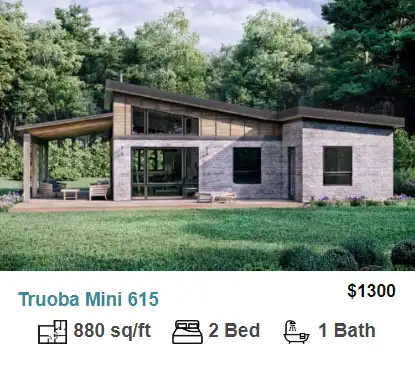Tiny homes are inherently better for the planet by virtue of the fact that they consume much fewer resources to provide all of the amenities we expect from a home.
Beyond this intrinsic sustainability, some tiny home manufactures are going to great lengths to make their builds as green as is currently possible. With US households producing 5.43 gigatons of CO2 each year, many believe that there has to be a better option, and there is! Tiny homes consume only about 30% of the power required for a typical single-family home. Additionally, tiny home dwellers tend to buy less junk (packaging), recycle more, and employ more sustainable power and waste disposal options.
Tiny Home Manufacturers Have Gone Green
Recognizing that this is a major driving force in the tiny home movement, many manufactures have started incorporating sustainable building materials and energy saving features into their builds.
Tumbleweed, one the major producers of tiny homes on wheels, has pursued and received Green Certification from TRA. Here is an excerpt from their website:
“Tumbleweed’s Quality System has been independently evaluated by TRA Certification, Inc. and found capable of producing Green Recreational Vehicles. The evaluation of Tumbleweed’s quality system, production process, material usage, recycling and environmental practices have earned the highest-level distinction.
How we earned the highest level of Green Certification:
- Heat Recovery Ventilation System keeps your air quality fresh and helps prevent condensation
- Non-emitting insulation made from recycled materials
- Ductless and efficient heating and air conditioning
- Dual pane energy efficient windows
- Low flow water fixtures
- Composting options
- Energy efficient appliances and lighting
- Certified lumber, sheathing and subfloor
- Excess materials recycled offsite or donated to the Restore
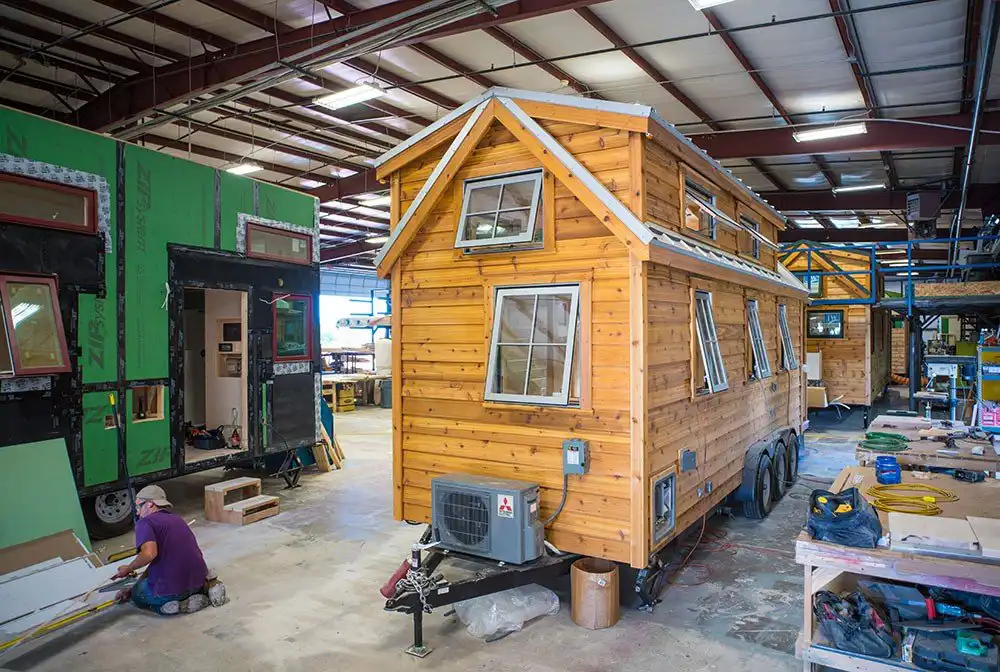
Image Credit: tumbleweedhouses.com
Escape have taken some innovative steps with their eModels. They are built from the ground up to consume less and be powered directly by an EV tow vehicle. Here’s an overview from escape:
“Being Earth-friendly has always been a main focus at ESCAPE. Living small is simply better for the planet. With the eESCAPE series, we have taken it up a notch as new materials and products have become available. For example, using new Green Gold Certified insulating options that are not only people friendly, but primarily made of recycled materials. Other notables include sustainably grown wood siding and paneling, LED lighting that uses almost no power and construction methods that are more efficient and time effective, which reduces the actual energy needed to build each unit. Plus, customers will be able to run most of the units on solar power or directly from new EV cars and trucks. It all adds up to a better, more sustainable way forward.”
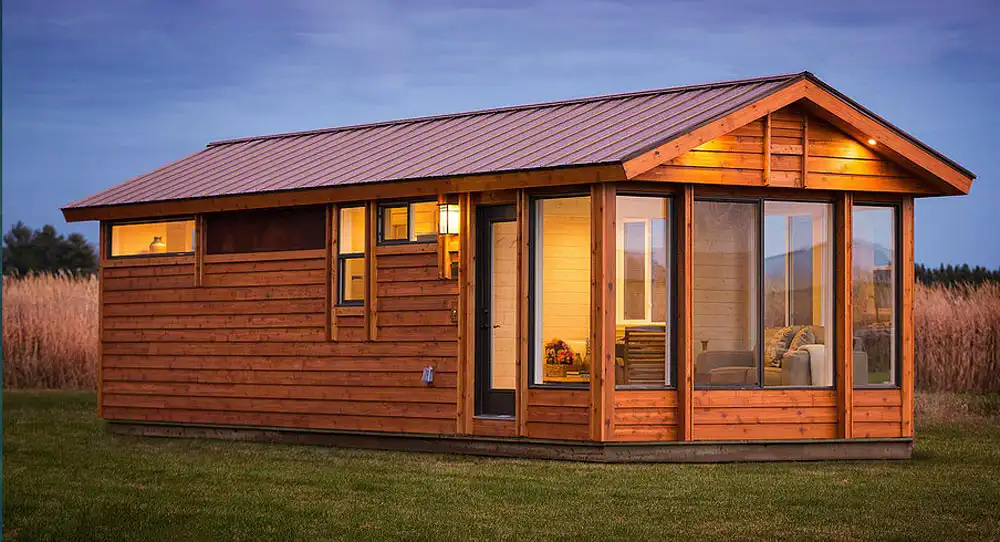
Image Credit: escapetraveler.net
Green Moxie jumped into tiny homes with a green first design. Here’s what they had to say about their tiny homes:
“We take responsibility for our impact on the earth. We recycle, upcycle and are continuously striving to waste less, consume less and need less. So it’s no surprise that the tiny house movement really ticked all our boxes.”
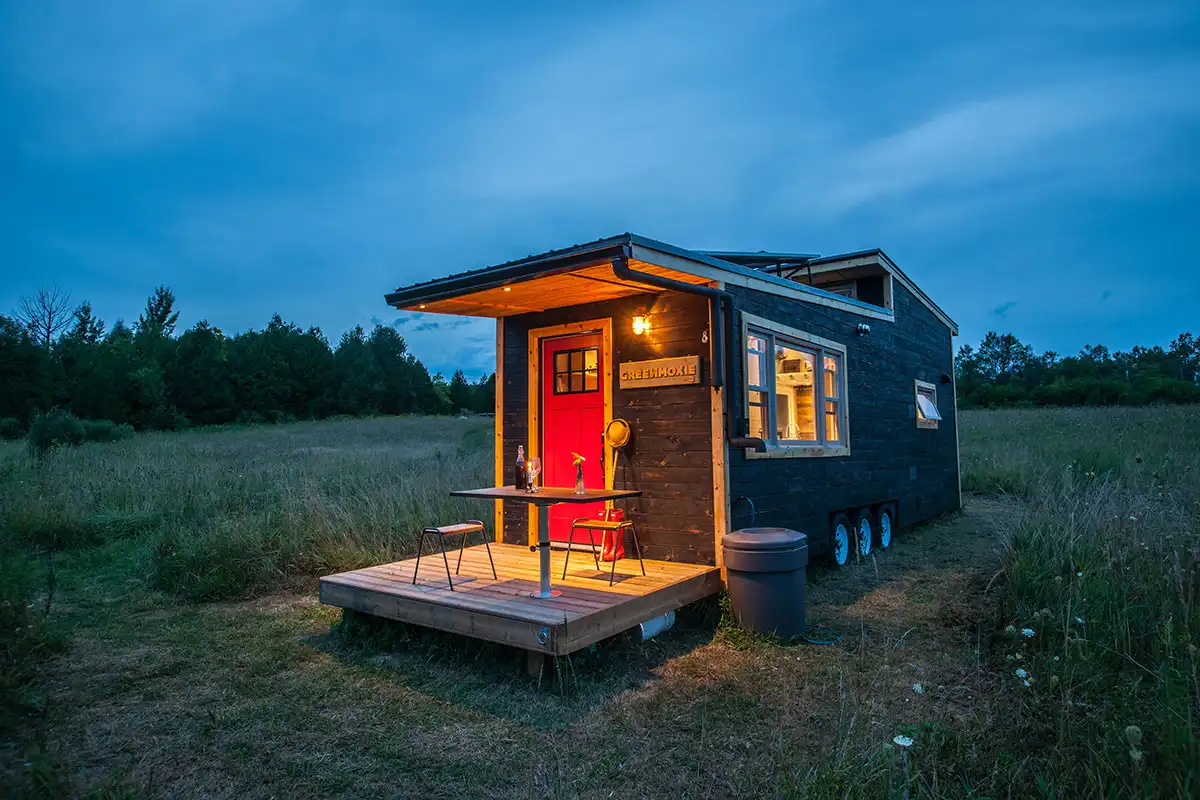
Image Credit: greenmoxie.com
Making Your Tiny Home Even Better for the Earth
Are you building or designing your own tiny home? Here are some tips to make sure your tiny is the greenest of the green.
Materials
When planning a green tiny home build, your materials list is a good place to start. There are a wide variety of recycled, low-impact, and high efficiency options available.
- Bamboo is a great sustainable option for flooring with a few caveats. It is a naturally fast-growing plant that can be sustainably harvested. Bamboo can be susceptible to moisture however, particularly if it has been treated or stored improperly. Do your research and buy a high quality product.
- Green insulation options include recycled cotton, wool batt, and cellulose. Each has their pros and cons, but cellulose scores the highest for both sustainability and efficiency. For a more in-depth look at eco-friendly insulation options, check out our tiny home insulation article.
- Recycled lumber is a great way to lower the cost of your home to the earth as well as your bank account. Lumber for repurposing is often available on local sales sites such as Facebook Marketplace as well as tear down sites. Recycling lumber often involves some “sweat equity” in the form of removing old nails and screws.
Insulating
In addition to using a sustainable insulation material, sealing your home well is a big step towards lowering your household carbon footprint. All seams and joints should be caulked and if possible a blower door test should be done to test for and locate leaks. To shore up any imperfections, a quality house wrap should be applied before the exterior siding. The same principal can be applied on the inside with plastic sheeting stapled to the stud faces underneath your interior paneling or drywall. Your overall home insulation strategy should be appropriate for your climate zone. More on insulation requirements by climate zone here.
The better our insulation strategy, the less power we consume heating and cooling our homes. Which leads us to…
Power Consumption
Another important factor in consuming less power is choosing appropriately sized, efficient HVAC and water heater options.
Heating and cooling is a major power consumer for those of us not blessed with ideal daily temperatures. We explore heating and cooling your tiny home in depth in this article, but in most cases a mini split AC/heat pump setup is going to be ideal for most tiny homes. These are rated in BTU and the goal here is to use the smallest unit possible that can effectively heat and cool the interior volume of your tiny home.
Tankless water heaters are far more efficient than their heated-tank counterparts. Traditional water heaters constantly reheat the same tank of water over and over again until it is used and replenished. Tankless water heaters rapidly heat water on demand with no wasted power keeping it stored hot. Tankless hot water heaters range in heating capacity, which is measured in gallons per minute (GPM). Selecting an appropriate size is important as these units use an incredible amount of amperage when they kick on and an oversized unit will offset your power savings. Check out our full breakdown on the best size of tankless hot water heater for your application here.
This one may seem counterintuitive, but a great way to lower your total carbon footprint is to burn propane. I know weird, right? The thing is, propane is way more efficient at heating than electricity is, and since most electricity is produced by burning fossil fuels using less, even if in a more direct form is a big net win. Propane can be a great option for heating your home, cooking your food, and heating your shower water.
For those that want the ultimate in sustainability, there’s no beating wind and solar. Solar power systems are available in ready made kits, as individual components, or built and installed by professionals. Whether you want to be completely off-grid or are interested in selling solar electricity to the power company, there is a solar power system out there for you. For an in depth look at solar options for tiny homes and even harnessing wind power with small turbines like those found on yachts, check out our full write up here.
Since tiny homes have all of the same sustainable and efficiency focused options available as traditional homes with a much smaller volume to heat and cool, they are “naturally” at the forefront of sustainable living.
For more information on keeping your tiny home efficient, check out our articles on insulating and heating and cooling your tiny home.
Go forth with your knowledge and dare to live tiny.


